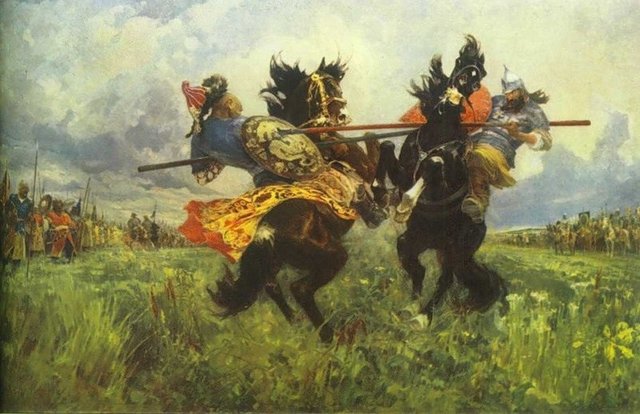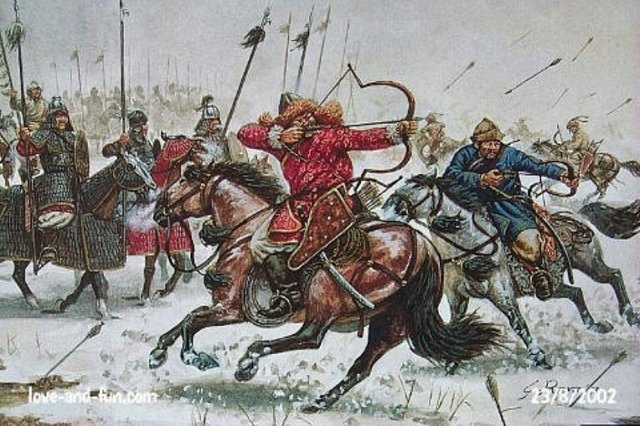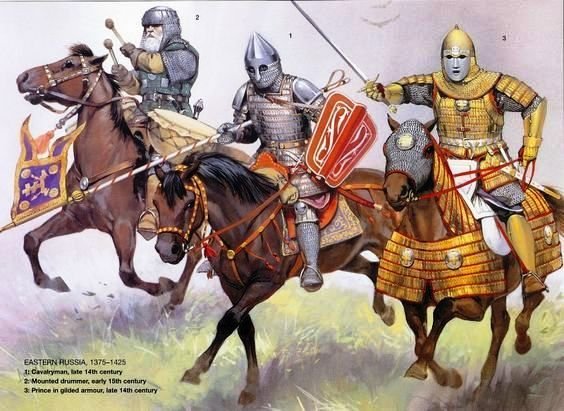The nomad (A short story that turned out pretty long) Part 4
Hello Friends,
In Part 1, 2, and 3 of this story, I discussed the situation for two hundred and fifty years Russia was a part of the ulus Jochi or a Golden Horde. In the middle of the 14th century though the Golden Horse broke into Eastern and Western parts. The control over its Western Part was ceased by the imposter Khan Mamai (not a descendant of Genghis Khan ), who wanted to drastically increase the taxes in Russia. It also discusses the reasons why the Russian dukes didn't want to tolerate such an increase. What happened then read below.
The Nomad
Part 4

In 1374 Dmitry refused to pay an increased tax. The chronicle record state: “and there was a break of peace with Mamai.” This is a very important phrase. In the chronicles have never said this phrase before that someone could “break a peace” with the Golden Horde. Peace could be broken only with equal as well as you can only quarrel with equal.
Because the second important phrase - "Mamai appointed tsars to the thrones." The tsar is the distorted words of a Caesar or emperor. Only God could appoint Caesar to the throne. The Mongolian Khan in the Russian chronicles is called no other than "Tsar." Russia recognized him as emperor. Because when the Crusaders defeated Constantinople in 1204, it was a blow to the whole Orthodox world. Enormous blow. The whole Orthodox world knew that there was a patriarchate and a patriarch in Constantinople. It was the center of attraction of the whole Orthodox Acumen. And it was gone. Then in the 1230s Mongols appears who thwart everything that is in their way. With fatalism inherent to the Middle Ages, Russia recognizes the great Mongolian Khan as Tsar. All chronicle records tell us that it was the Tsar for whom the Metropolitan, bishops, priests prayed, and to whom the domestic state tax was paid.
And yet here, not a descendant of the great Genghis Khan, but some leapfrog, begins to appoint illegal kings on the thrones, and at the same time, he had the audacity to demand a tax, which was paid to Jani Beg.
In these circumstances, of course, there was a break of peace. From now on Russia could fight with Mamai. Especially since Dmitry probably felt behind him a lot of power.
Who opposed Moscow? Even though the huge monolith - ulus of Jochi broke down, Moscow still never before, and very long after that had no opponent more dangerous. A mass of superbly organized according to the Mongol model, a light cavalry, with the regiments of the elite heavy-armed horsemen, of course, was a huge threat. By that time, there was no account of big field battles that Russian troops did win against Tatars. There was no such experience.
At this time, the Russians fought in the West with Lithuania, and with the Crusaders. There were quite comparable contingents: five hundred people, six hundred, three thousand, etc. These were normal heavily armed horsemen who fought about the way the Russians did.
But the Russians were only learning how to fight the Horde. This is evident by the fact that at that time the Russians almost did not adopt Mongolian weapons yet. When one is constantly fighting, opponents are become very similar, because the best way to fight the opponent is by their own means. The Russians were dramatically different from the Tatars at that time.
According to Yassa of Genghis Khan, any military commander over the ten warriors and above had to ware some kind of iron armor. However, nine-tenths of all Mongolian soldiers had no armor. Their main weapon was bow and arrows. They did not enter the thick of the battle until the last moment. Their task was to overwhelm the enemy line with arrows. And after the enemy lines came into disarray, a heavy horsemen attack finished them off.

|
Yassa is/was the forty millenary oral law code of the Mongols declared in public in Bokhara by Genghis Khan de facto law of the Mongol Empire even though the "law" was kept secret and never made public. The Yassa seems to have its origin as decrees issued in war times. |
The Mongols, like many other nomads, were unmatched archers. They were born with a bow and die with a bow. So the Mongols had plenty of lovely light horseman with very good bows and archers. On average, they were stronger than any opponent of their time in any region.

The Russian horseman had to shoot less from bow archery and fight better on spears. As a professional military, if he wanted, he could buy a bow no worse than a Mongolian and learn to shoot just a well. But if he spent all his time on archery, he would have less time to learn to work with a sword, a spear. That is, he would turn into an analog of Mongol. He couldn't do that.
First of all, Russian horseman had a heavier armor.

Most importantly the military tactics of Russian and, in general, of European horseman were built around spurs. Tatars had no spurs. And spurs dictate a specific horseback riding. This riding dictates a different saddle, with a high rear bow on which to rest the lower back. Such landing implied a heavy spear fight. The Russian warrior was always the equivalent of a European knight who attacked an opponent with a shield and a spear. The Russian warrior was armed at least functionally within the same tradition as the European.